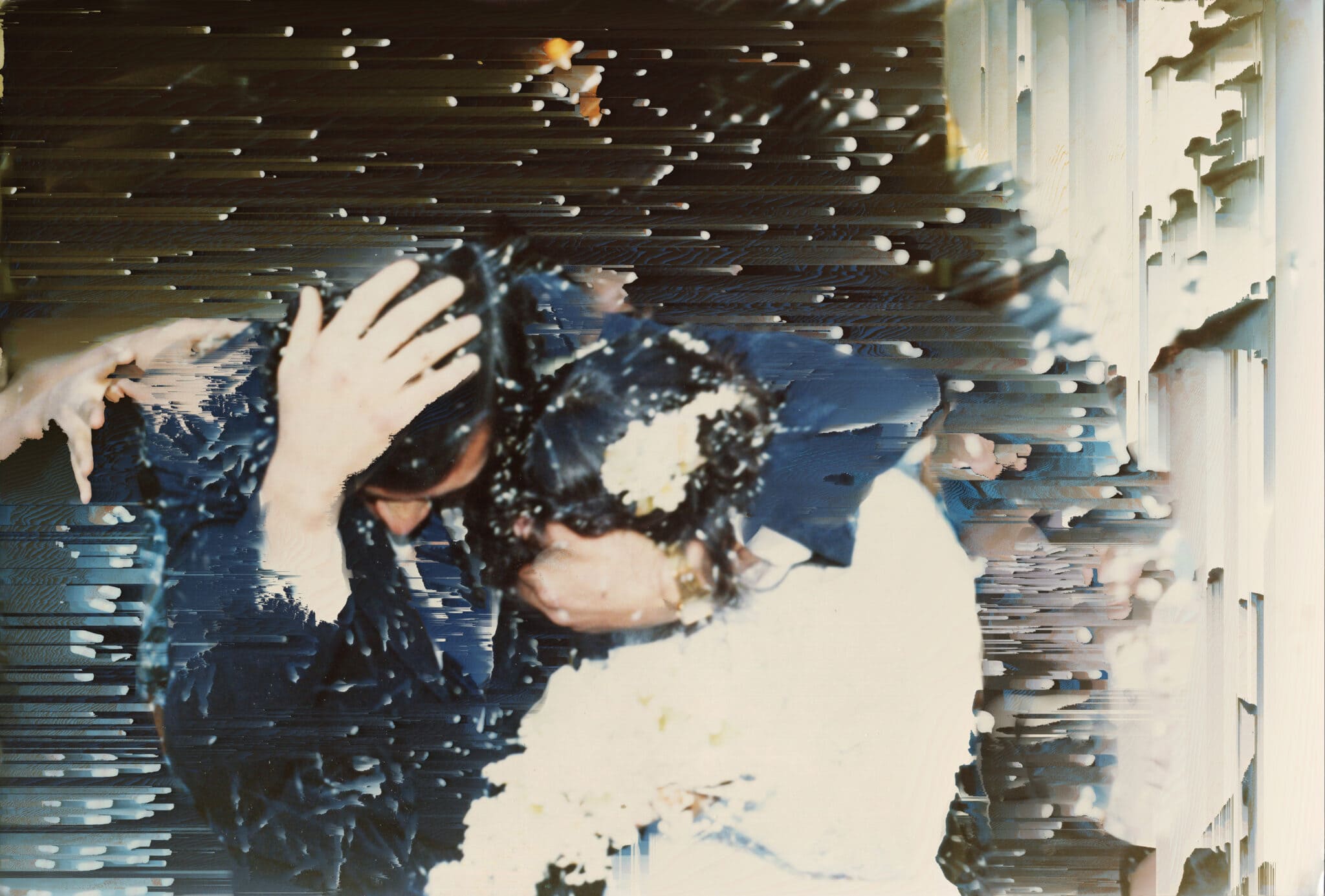
The artificial memories of Cristóbal Ascencio
In Las Flores Mueren Dos Veces, the Mexican photographer based in Madrid uses techniques such as data bending, photogrammetry, and virtual reality to translate into images what he felt when he learned that his father committed suicide. It is a project where the artificiality of memory is intensely captured thanks to an inventive use of the computer.
By Alonso Almenara
“Las Flores Mueren Dos Veces is about a reconciliation,” writes Mexican photographer Cristobal Ascencio. “My father Margarito – named like the flowers- was a gardener and died for the first time when I was 15. Fifteen years later, I learned that his death had been a suicide, and it was then that he died for the second time. In his last letter, he wrote about plants and said goodbye saying, ‘Forgive me and communicate with me.‘”
This was the disruptive event that changed Ascencio’s life and his understanding of photography. Suddenly, he became obsessed with his memories and the artificiality of the images he kept of his father: could it really be said that he had known him? What else could someone he thought was so close to hide? And what differentiated, deep down, his memories that referred him to a false idyllic family from the artificial memories of the replicants that emerged from Philip K. Dick’s imagination? “By reviewing family albums and manipulating structural data in his photographs, I question the memories associated with them,” he explains. “From this experimentation, I create new images that serve as a metaphor to talk about corrupted memory.”
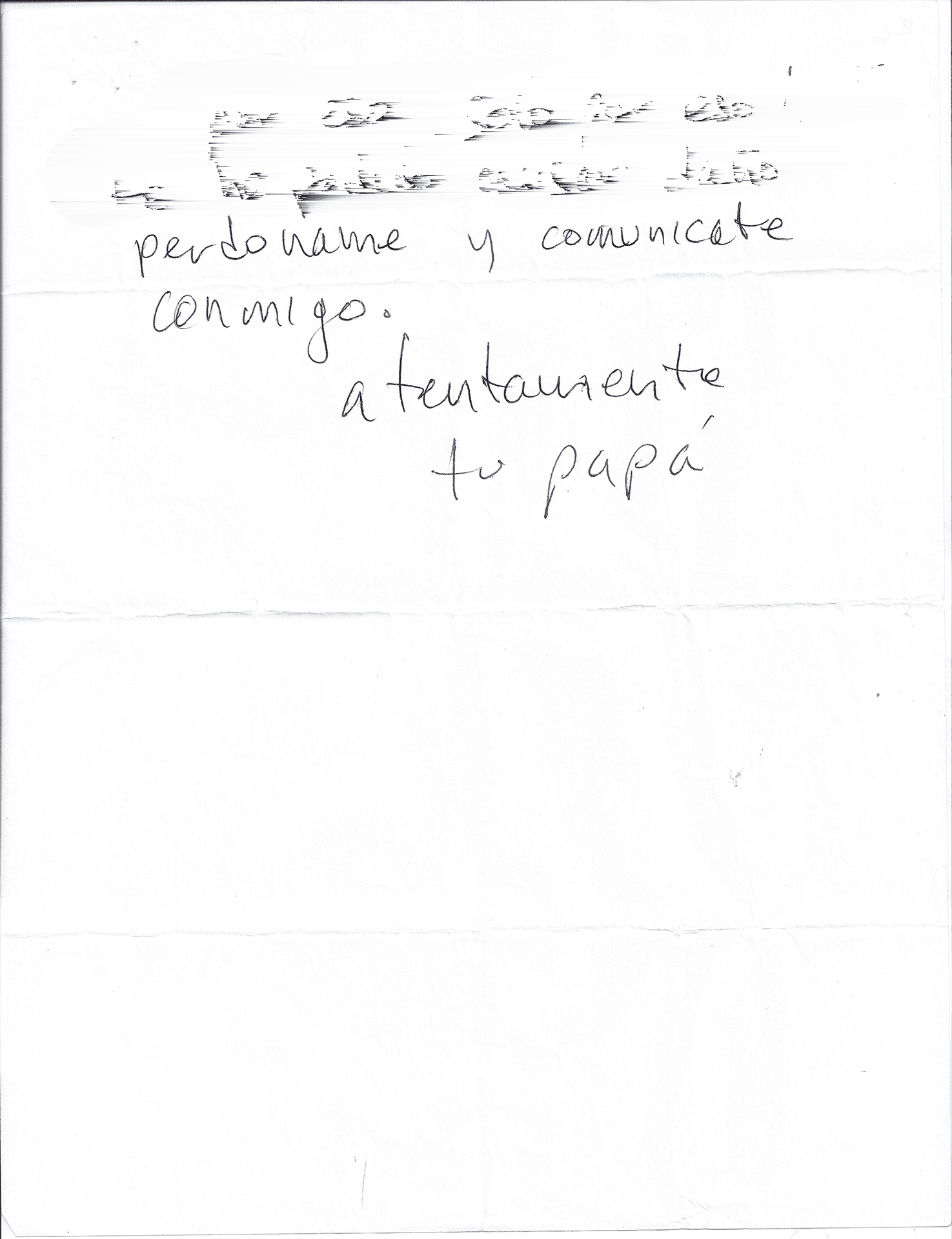
For this work, the 34-year-old photographer entered the British Journal of Photography’s Ones To Watch list in 2022: a selection of emerging visual creators chosen from a pool of nearly 500 nominations. What distinguishes the project is the intense emotional charge of the images and the ingenious way of using technologies: Data bending, photogrammetry, and virtual reality open new perspectives in the artistic treatment of primordial themes such as grief, the nature of memory, and the parent-child relationship.
Las Flores Mueren Dos Veces consists of three parts: digitally altered analog photographs, a virtual environment created from 3D models of plants associated with Ascencio’s father, and the archival material itself. What runs through this work is the ghost of an impossible conversation with the absent father. It is also a curious set of images in which photography, memory, the digital world, and the organic world of plants are amalgamated.
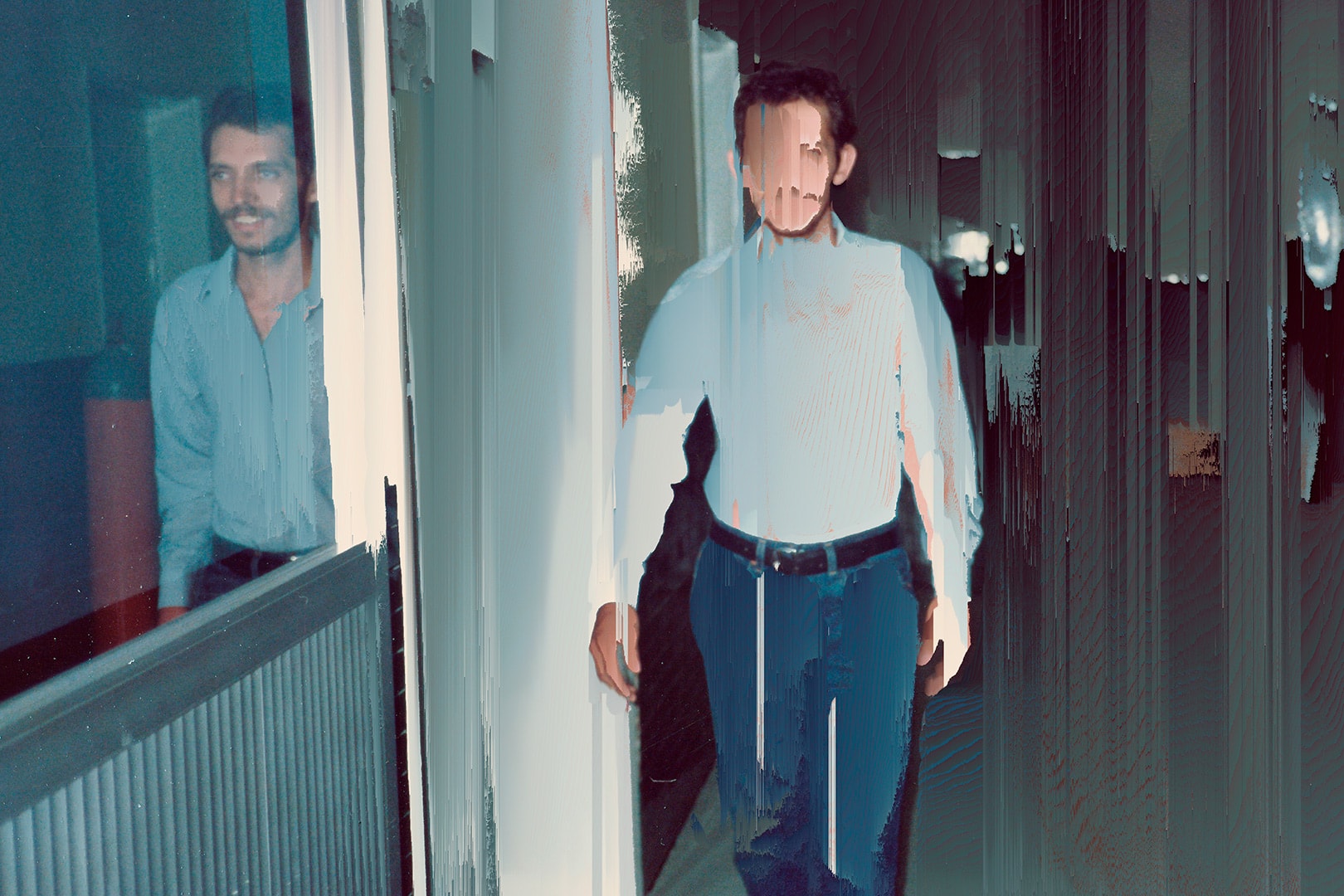
Working with archival images or photos from family albums is not new: it has a long history and has become an important trend in contemporary photography. However, you have found an original way to approach this subject. What specifically interested you about working with old or recovered images?
Las Flores Mueren Dos Veces was my first approach to working with archival images. Specifically, I wanted to do a project that talked about my father and my relationship with him. For me, the archive is very personal: Since I was a child, I used to collect photos from family albums. I would take the images and build my collection because there were specific photographs that I had very closely linked to a particular memory. When I approached this project, I wanted to talk precisely about how those memories have been affected since I found out that my father had committed suicide. It seemed to me that using the archive was the most direct way to make that connection with personal memories.
The second part of the project, which has to do with creating a garden from 3D models, is about responding to my dad’s letter before he died. I started to think about how I could communicate with him, and what I did was look for plants in Mexico that he had planted and that are still alive today to make a garden. And I decided to do it through photogrammetries: that is, 3D models made from photos I took of those plants, which I then mounted in a virtual space. It seemed to me that it was a technical solution that made sense because I wanted to create a space that could not have existed in any other way. Those plants are in different places in Mexico, and I could only bring them together in this way.
After that whole process, I realized that it was like a direct collaboration with my father and that the work somehow revived my relationship with him: going back to those places and having conversations with the people who have those plants. It’s how this relationship that was supposed to have ended when he died continued to develop.
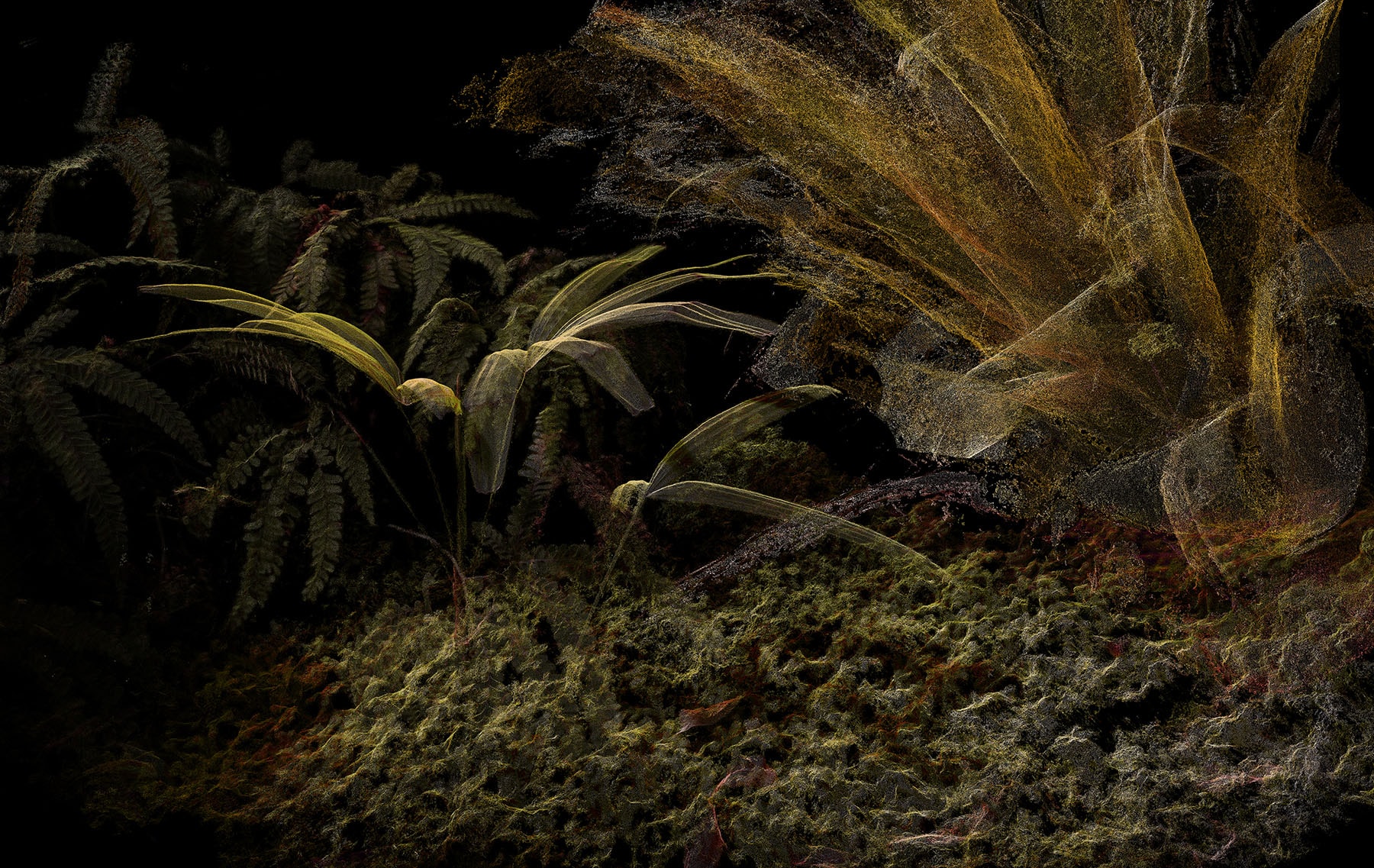
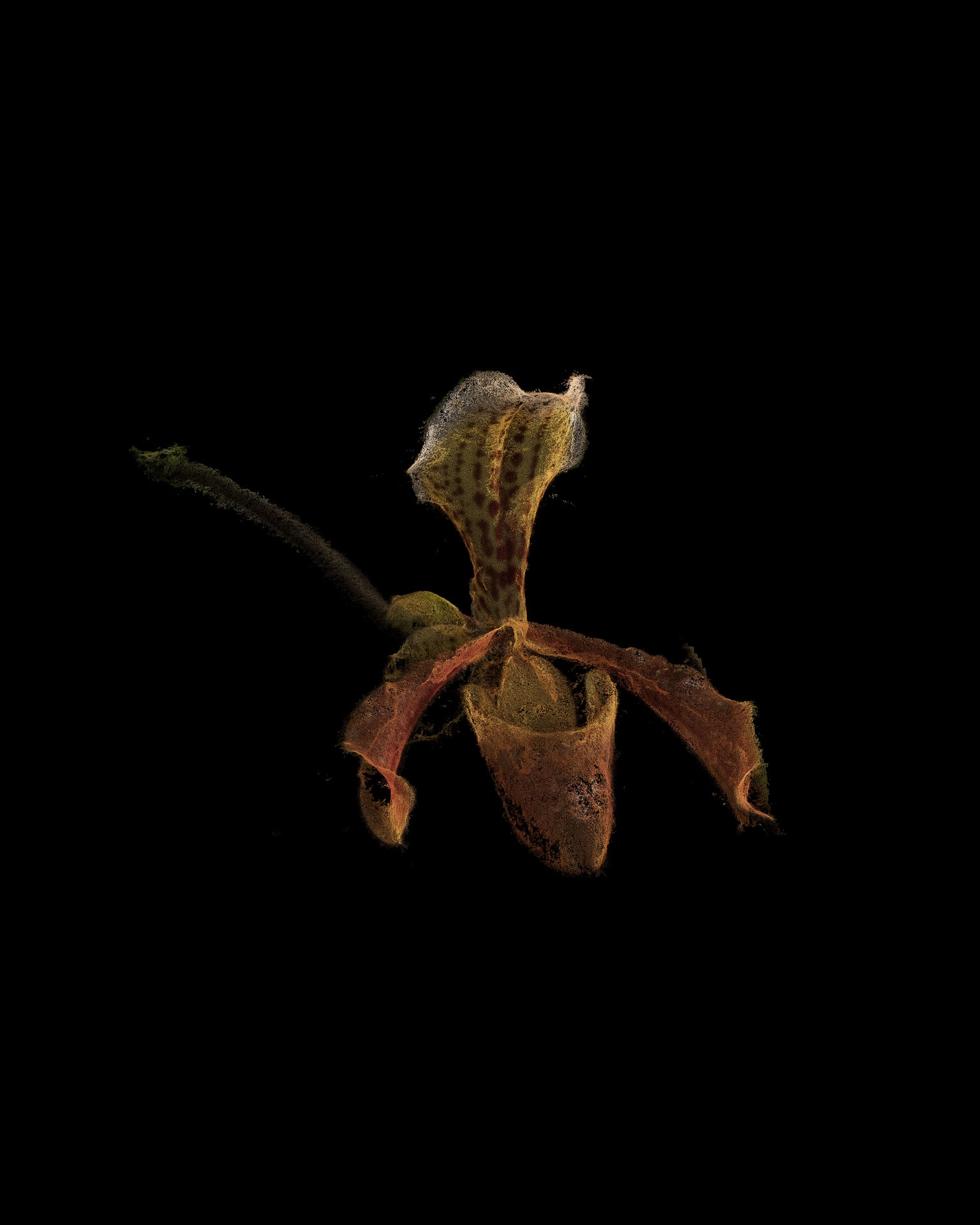
You say you’re interested in exploring how memories are altered and that you found a model for how specific technological tools allow images to be digitally altered. Can we talk, first, about what technologies you use? And then, what is it about them that interests you as a photographer?
One of the technologies I used in this work is a language called Processing, which is widely used in visual creation. And in that framework, I use a technique called Pixel Sorting, a type of Data Bending. It was a while ago: the first applications in photography date back, if I’m not mistaken, to 2008 or 2009. In this case, I was interested in understanding the image as data and playing directly with that data. But the most important thing was that the technique used had something to say about the work itself. I then established a metaphor for how information can be altered in the numerical image and how my memories change.
On the other hand, this procedure allowed me to work with a concept that interests me a lot: digital error or glitch. I have always liked that element of chance that makes images take on a new life. I like that it’s something you can’t control 100%, and I think that even when one deals with vital or very personal subjects, it’s crucial in photographic practice, or in any creative practice, to have fun and enjoy what you’re doing. Experimentation and playfulness were as vital to me as the relationship between technique and content. All of that coincided with the use of glitches.
There is an opinion that using digital media for image processing brings a risk, which is to “sterilize” the photos. And yet, in your work, the opposite seems to happen: the artifice enhances the emotional impact of the photographs.
In general, we tend to romanticize the analogical and think that everything digital cools the images and takes away the aura or the punctum or whatever is inside a photograph. It doesn’t have to be that way. New technologies tend to be very flashy, so one tends to focus only on the final result without considering what is behind it, all the processes that must be carried out to get to that image. But it starts to make sense if we investigate and learn to use technology. In the end, techniques like Pixel Sorting are just another tool for creating images. If the use of that tool is justified, then the procedure does not have to be understood as something cold.
“I compare the current state of photography to the boom of the digital medium. There was a discourse that it was going to kill photography. No, we are now seeing the first changes of a new period. Artificial intelligence is a potent tool, but it will not replace the photographer’s work or that we are in a war. It’s up to us to learn how to use it and see how it works for us in our practices.”
Do you consider that we are living in an exciting time for photography? I am referring to the abundance of tools that the photographer has today. Or has it always been that way? I mean, in the sense that technological innovation is a constant that photographers have had to deal with in the beginning.
It’s not that it has always been the same, but I think that we are repeating patterns from a previous period. I usually compare the current situation of photography with what happened when the digital media boom began, and there was all this talk about how this will kill photography and all these very pessimistic predictions. No, things change, and now we see the first changes of a new period. Artificial intelligence is a potent tool, but I wouldn’t say that it will replace the photographer’s work or that we’re in a war. We have to learn how to use it and see how it works in our practices.
Have you experimented with artificial intelligence? Is it something you are considering incorporating into your work?
Last year I was interested in neural networks and did some short exercises with image banks. There is work already being done that makes perfect sense to me when it comes to using this tool. For example, the result of Juan Covelli, a Colombian photographer who makes fascinating images with neural networks, comes to mind, or the work of the Argentinean Sofia Crespo. They are two excellent examples of how to understand artificial intelligence and use it, squeeze it, and make sense of it. I have also experimented with generating images from text. I’m excited to use it, but I still need to find a way to get out of the aesthetic to get to this other point that interests me, which is to use the tool to expand a discourse to enhance it.
We have talked about the prejudice regarding the digital treatment of the image. Another bias has to do with automation. What does the photographer’s work consist of when you use these technologies? To what extent are you the author of the images and not the machine or the engineer who programmed Processing?
To answer you, I would like to describe what I do when I use Processing. Imagine you have a blank text box and have to explain to the program what to do, from loading the image to how to interpret it and what to do with it. Using Pixel Sorting is laborious. The program divides the image into quadrants and assigns values to those quadrants. For example, I can tell the program: “All the pixels that are between the value 10,000 black and 5000, separate them, move them three pixels to the right, four times up and repeat that 30 times”. And from there, after testing and testing, it comes up with a final image that I like. There’s always a component of chance and play in the process, but it’s necessary to test once, twice, three times, a hundred times until you get to a point where you say ok, this works for me.
So, it’s a photographer-machine collaboration rather than an automated process. When you photograph, you are already collaborating with a machine to capture the light; and when you work the images on the computer, in a way, you’re doing the same thing. The important thing is that if you need clarification about what you want to do and why you’re using that tool, you will get nowhere.
Where is the use of technology in photography going?
Right now, artificial intelligence is the spearhead. And we’re going to start seeing artificial intelligence applied directly to the device, to the cameras. In a few years, or probably sooner, we’ll begin seeing cameras that can be programmed to take the best possible image based on specific parameters they will learn. I find it super exciting to think that a camera will start to understand what I shoot, how I shoot, what kind of light I’m interested in, and so on. And it will assimilate it. I don’t think it’s crazy to think that there will come the point where my job as a photographer will be to teach a camera what my look is and start leaving it in the fertile ground to harvest images.


